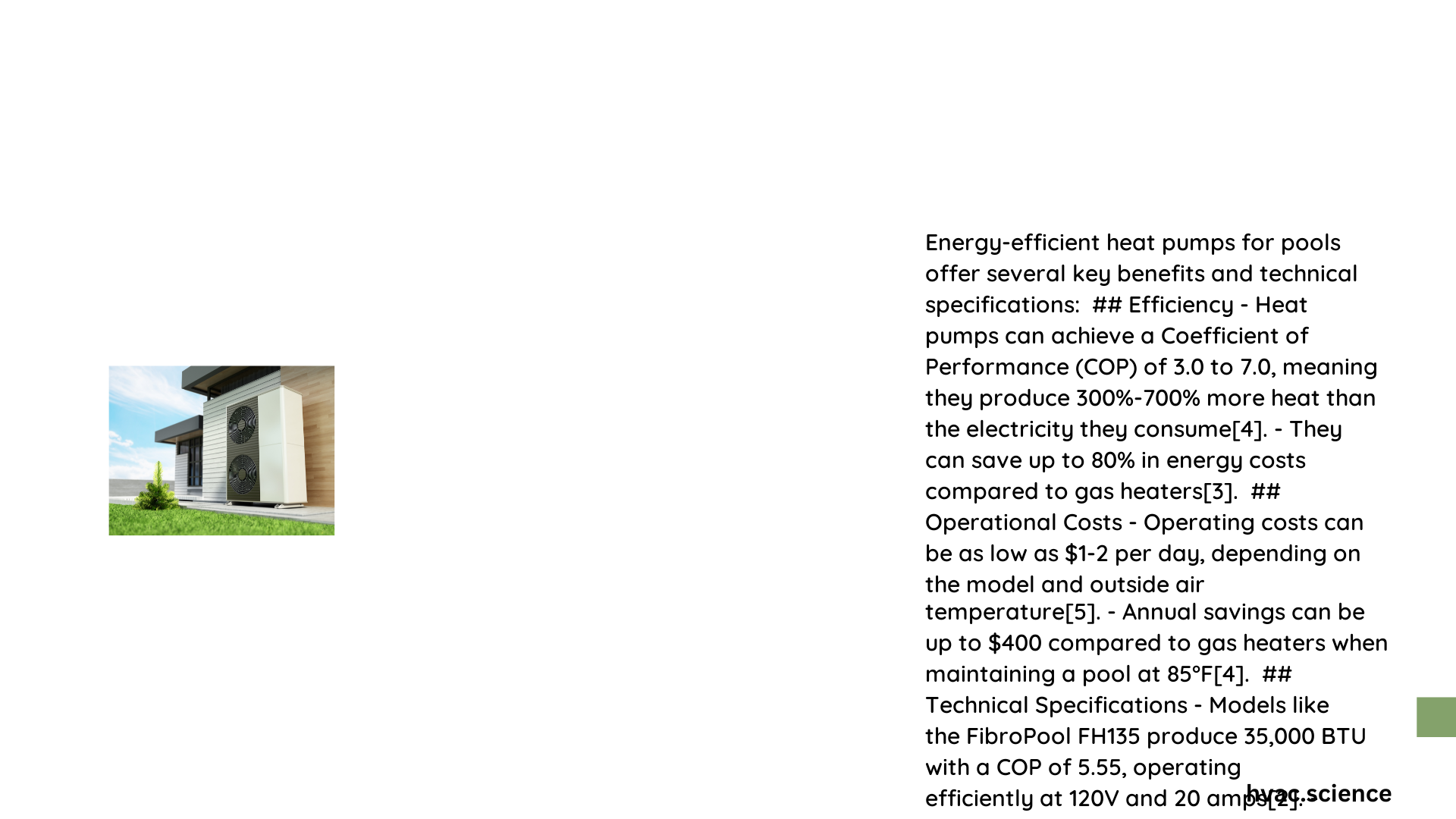Pool owners seeking optimal heating solutions are increasingly turning to energy efficient heat pump electrical systems. These advanced technologies offer remarkable performance, delivering substantial energy savings while maintaining consistent pool temperatures. By leveraging innovative heat transfer mechanisms, modern pool heat pumps can reduce electricity consumption by up to 80% compared to traditional heating methods, making them an environmentally friendly and cost-effective solution for maintaining comfortable swimming conditions.
What Makes Heat Pumps Energy Efficient for Pools?
Heat pumps represent a revolutionary approach to pool heating, utilizing electricity to transfer thermal energy rather than generate heat directly. Unlike traditional gas or electric heaters, these systems extract warmth from ambient air and transfer it into pool water with exceptional efficiency.
How Do Pool Heat Pumps Work?
- Air Temperature Extraction
- Draws heat from surrounding air
- Uses refrigerant to absorb and transfer thermal energy
-
Operates effectively in temperatures above 50°F
-
Electrical Efficiency Factors
- Low power consumption
- High Coefficient of Performance (COP)
- Minimal energy waste during heat transfer
What Are the Top Energy Efficient Heat Pump Models?

| Model | BTU Output | COP | Power Supply | Efficiency Rating |
|---|---|---|---|---|
| Arctic Titanium 025ZA/B | 9,383-37,532 | 3.6-13 | 220V, 1-phase | High |
| FibroPool FH135 | 35,000 | 5.55 | 110-120V | Excellent |
| Hayward HeatPro | 90,000-140,000 | 5.7-6.0 | 240V | Superior |
What Performance Metrics Should You Consider?
Coefficient of Performance (COP)
The COP represents the ratio of heat output to electrical input. Higher COP values indicate superior energy efficiency:
- COP 5.0: Generates 5 units of heat for every 1 unit of electricity
- Arctic Titanium models achieve up to 13 COP under optimal conditions
- FibroPool offers consistent 5.55 COP performance
What Are Installation and Operating Costs?
Cost Breakdown
- Initial Investment
- Unit Cost: $2,000 – $10,000
- Labor: $500 – $2,000
-
Electrical Upgrades: $500 – $2,000
-
Operational Expenses
- Lower electricity consumption
- Reduced maintenance requirements
- Long-term energy savings
What Electrical Considerations Exist?
Electrical Requirements
- Dedicated electrical circuit
- Voltage range: 110V-240V
- Amperage: 10-30 amps
- Professional installation recommended
What Maintenance Strategies Enhance Efficiency?
- Regular cleaning of heat exchanger
- Annual professional inspection
- Maintain proper water chemistry
- Protect unit from debris and extreme weather
What Environmental Benefits Emerge?
- Reduced carbon footprint
- Lower greenhouse gas emissions
- Sustainable heating technology
- Minimal environmental impact
Conclusion
Energy efficient heat pump electrical systems for pools represent a sophisticated, eco-friendly heating solution. By understanding technical specifications, performance metrics, and operational strategies, pool owners can make informed decisions that balance comfort, efficiency, and sustainability.
